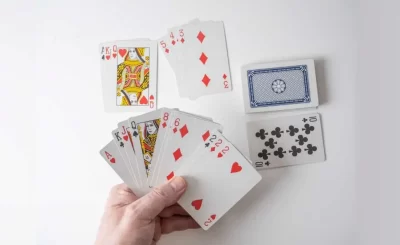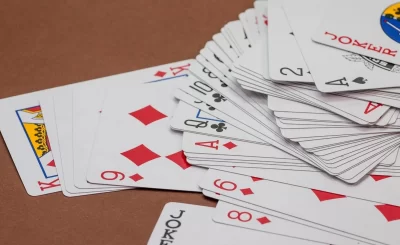Rummy is a game of skill which requires strategy, card counting and bluffing tactics. To succeed, players must master melding sequences (pure or impure) and runs, using jokers effectively in order to increase their odds of victory.
Keep a keen eye on your opponents’ discards and picks, as this can help you determine potential sets and runs they may attempt to create, which in turn helps minimize penalty points if they lose.
Discarding High-Value Cards
Reducing point load early on and increasing chances of completion later are essential components of winning rummy matches. By discarding high-value cards early, discarding will reduce point burden while simultaneously improving your odds of running or sets completion later on.
Discard middle cards such as 4s, 5s, and 6s when possible as these versatile cards can help form sequences or sets more easily than others can. Furthermore, your opponent could easily pick these up.
Astuting your opponents’ discards and picks is an effective way of understanding their strategies, enabling you to adapt and adjust your gameplay accordingly. Also beneficial is watching out for any mistakes they might be making; for example, pausing before picking up cards from the discard pile indicates an attempt at creating pure sequences.
Keeping Track of Your Opponents’ Cards
One key aspect of an effective rummy strategy lies in keeping track of your opponent’s cards. This requires both skill and talent; to perfect this skill takes practice. Once you know which cards your opponents pick and discard, you can plan your moves accordingly.
For example, when an opponent discards a high card like the Q, you can assume they’re trying to form a sequence or set with it. In such instances, it is wiser to prioritize runs over sets and retain cards that could help form further sequences.
Keep tabs on your opponents’ cards to help keep your score low, as that is essential in winning at rummy – going rummy requires reducing your total points to zero or below the total of other players’ hands in your hand and that is known as “going rummy”.
Using Jokers
Rummy is a game of skill and strategy, but an effective bluff is also key to winning it. By discarding cards that hint at opponents’ strategies, you can create confusion in their minds and disrupt their plans – but to do it successfully requires precision in timing.
Rummy sequences are ordered groups of cards of one suit that can either be pure (without joker) or impure ( without joker). Following your opponent’s card selections and discards can give you insight into their gameplay, enabling you to more quickly determine which card they might need for completion of a set or pure sequence – giving you more opportunity while mitigating risks in your own game play.
Keeping a Close Eye on Your Opponents’ Discards and Picks
Untracking how other players discard and collect cards provides insights into what combinations they’re planning to form, providing opportunities to design and execute your own game strategy. Keeping an eye out can help you devise and execute it more successfully.
An opponent who discards builder cards early is likely working towards creating a pure sequence. Conversely, pausing on picking up discards could indicate they intend on keeping it for later use.
Watching your opponent is key to succeeding at rummy matches. Judging when to pick and discard cards is essential, and can prevent costly errors from costing penalty points when creating melds or trying to knock over opponents.
Keeping a Mix of High and Low-Value Cards
Prioritizing sequences and sets is an integral component of successful rummy strategy. Doing this helps minimize points and protect you from harsh penalties when your opponent declares. Effective card organization facilitates decision-making – begin by sorting cards logically into suits and sequences, with pure sequences (no jokers) as one of your goals as the game starts.
Keep a keen eye on your opponents’ discards and picks when playing rummy, as this allows you to understand their strategies while adapting yours accordingly. For instance, if an opponent repeatedly discards a particular card it could indicate they’re trying to form a set or sequence with it which presents you with an opportunity to disrupt their plans and reduce their chance of declaring!








